Pass Your Amazon AWS Certified Developer Associate Exam Easy!
Amazon AWS Certified Developer Associate Exam Questions & Answers, Accurate & Verified By IT Experts
Instant Download, Free Fast Updates, 99.6% Pass Rate
Amazon AWS Certified Developer Associate Practice Test Questions in VCE Format
Amazon AWS Certified Developer Associate Practice Test Questions, Exam Dumps
Amazon AWS Certified Developer Associate (AWS Certified Developer Associate (DVA-C01)) exam dumps vce, practice test questions, study guide & video training course to study and pass quickly and easily. Amazon AWS Certified Developer Associate AWS Certified Developer Associate (DVA-C01) exam dumps & practice test questions and answers. You need avanset vce exam simulator in order to study the Amazon AWS Certified Developer Associate certification exam dumps & Amazon AWS Certified Developer Associate practice test questions in vce format.
Amazon AWS Certified Developer Associate - An Introduction to Core Compute Services
The AWS Certified Developer Associate certification is a valuable credential designed for individuals who develop and maintain applications on the Amazon Web Services platform. The exam, officially coded as DVA-C02, validates a candidate's ability to effectively use AWS services for developing, deploying, and debugging cloud-native applications. It demonstrates a deep understanding of core AWS services, their uses, and fundamental architecture best practices. Passing this exam signifies that you possess the technical expertise required to write code that leverages AWS services and to implement best practices for security and performance within the cloud environment.
Unlike some other associate-level certifications that focus more on architecture or operations, the AWS Certified Developer Associate exam is uniquely tailored to the developer's perspective. The questions are scenario-based and require you to think like a developer who is tasked with solving a problem using AWS tools. This means you need more than just theoretical knowledge; you must understand how to interact with services programmatically using the AWS SDKs, how to manage application lifecycles, and how to optimize applications for the cloud. It is a practical validation of the skills that are in high demand in today's technology landscape.
Preparing for the AWS Certified Developer Associate exam requires a dedicated and structured approach. The journey involves moving beyond a surface-level understanding of services to a deeper appreciation of their features, limitations, and integration patterns. It is about knowing which service to use for a specific task and, more importantly, how to implement it securely and efficiently. This series will guide you through the essential topics, providing the detailed insights necessary to build your confidence and knowledge, ultimately leading you to successfully pass the DVA-C02 exam and earn your certification.
The Core Compute Services for Developers
At the heart of any application is its compute layer, the engine that executes code and performs the necessary processing. On AWS, developers have several powerful compute options, each suited for different use cases. Understanding these options is the first fundamental step in preparing for the AWS Certified Developer Associate exam. The most traditional of these is Amazon Elastic Compute Cloud, or EC2. EC2 provides virtual servers, known as instances, in the cloud. As a developer, you can think of these as your own private servers where you have full control over the operating system, runtime, and installed software.
For the AWS Certified Developer Associate exam, your focus on EC2 will be less on the infrastructure management and more on how your application runs on it. This includes understanding how to bootstrap an application using user data scripts, which are scripts that run automatically when an instance first launches. You will also need to be familiar with Amazon Machine Images (AMIs), which are pre-configured templates for your instances, and how security groups act as a virtual firewall to control inbound and outbound traffic to your application. A key concept is designing applications to be stateless so they can work with Auto Scaling to handle changes in load.
Moving beyond traditional virtual servers, AWS Lambda represents a paradigm shift towards serverless computing. Lambda allows you to run your code without provisioning or managing any servers. You simply upload your code as a function, and Lambda takes care of everything required to run and scale it with high availability. This is a massive topic on the AWS Certified Developer Associate exam. You pay only for the compute time you consume, down to the millisecond, which can be incredibly cost-effective for event-driven workloads. Understanding the Lambda execution model is crucial for any cloud developer.
A Deep Dive into AWS Lambda
AWS Lambda is a cornerstone of modern cloud development and a heavily weighted topic on the AWS Certified Developer Associate exam. It is a Function-as-a-Service (FaaS) offering that lets you build applications and services as a collection of small, independent functions. Each function is triggered by an event, which could be an HTTP request from an API, a new file being uploaded to an S3 bucket, or a message being added to a queue. This event-driven architecture allows you to build highly decoupled and scalable systems.
When preparing for the exam, you must understand the Lambda function configuration. This includes setting the memory allocated to the function, which also proportionally allocates CPU power, and defining the timeout period, which is the maximum amount of time a function is allowed to run before it is terminated. Another critical concept is the Lambda execution role. This is an IAM role that grants your function the necessary permissions to interact with other AWS services. For example, if your function needs to write data to a DynamoDB table, its execution role must have the appropriate permissions to do so.
The exam will present you with many scenarios involving Lambda. You will see questions about function versioning and aliases, which are features that allow you to manage different versions of your code and safely route traffic between them, facilitating practices like blue/green deployments. You will also need to be familiar with the AWS Serverless Application Model (SAM), which is an open-source framework that simplifies the process of defining and deploying serverless applications. A strong grasp of Lambda is non-negotiable for passing the AWS Certified Developer Associate exam.
Containerization with Amazon ECS and ECR
Containerization has become a standard for modern application development, and AWS provides a robust ecosystem for running containerized workloads. The AWS Certified Developer Associate exam expects you to be proficient in these services. At the core of this is Docker, a platform that allows you to package your application and all its dependencies into a single, standardized unit called a container. This ensures that your application runs consistently across different environments, from your local development machine to production servers on AWS. These container images are stored in a registry.
Amazon Elastic Container Registry, or ECR, is a fully managed Docker container registry provided by AWS. It makes it easy for developers to store, manage, and deploy their Docker container images. ECR is integrated with AWS Identity and Access Management (IAM), providing resource-level control over your repositories. You will need to know how to build a Docker image, push it to an ECR repository, and configure the necessary permissions for other AWS services to pull that image. This is a fundamental part of the container workflow on AWS.
Once your image is stored in ECR, you need a service to run and manage your containers. Amazon Elastic Container Service, or ECS, is a highly scalable, high-performance container orchestration service. ECS allows you to run your containers on a managed cluster of Amazon EC2 instances or using AWS Fargate, a serverless compute engine for containers. For the AWS Certified Developer Associate exam, you must understand the key components of ECS: the task definition, which is a blueprint for your application; the task, which is a running instance of a task definition; and the service, which maintains a specified number of running tasks.
Simplified Deployments with AWS Elastic Beanstalk
While EC2 provides granular control and ECS offers powerful container orchestration, some developers need a simpler way to deploy their web applications without worrying about the underlying infrastructure. This is where AWS Elastic Beanstalk comes in. Elastic Beanstalk is a Platform-as-a-Service (PaaS) offering that makes it incredibly easy to deploy and scale web applications and services developed with common platforms like Java, .NET, PHP, Node.js, Python, Ruby, Go, and Docker. It is an abstraction layer that automates the details of capacity provisioning, load balancing, auto-scaling, and application health monitoring.
As a developer, your interaction with Elastic Beanstalk is focused on your application code. You simply upload your code, and Elastic Beanstalk automatically handles the deployment. It builds the selected environment and provisions the necessary AWS resources, such as EC2 instances, to run your code. This allows you to focus on writing code rather than managing infrastructure. However, the AWS Certified Developer Associate exam requires you to understand what is happening under the hood. You need to know how to customize and configure your Elastic Beanstalk environments.
The exam will test you on various Elastic Beanstalk deployment strategies. These include "all at once," which is the fastest but involves some downtime, "rolling," which deploys the new version in batches to maintain availability, and "immutable," which launches a completely new set of instances with the new version and then swaps the traffic over. You will also need to understand how to manage environment configurations, such as changing instance types, and how to decouple your database from the Elastic Beanstalk environment so it is not terminated if the environment is deleted.
Object Storage with Amazon S3
Every application needs to store and retrieve data, and Amazon Simple Storage Service, or S3, is one of the most fundamental and versatile storage services on AWS. S3 provides highly durable and scalable object storage, making it suitable for a wide range of use cases, from hosting static websites and storing application assets to backing up data and serving as a data lake for analytics. For a developer preparing for the AWS Certified Developer Associate exam, understanding how to interact with S3 programmatically is essential.
Data in S3 is stored in containers called buckets, which must have a globally unique name. Within these buckets, you store your data as objects, which consist of the data itself and metadata. The exam will expect you to know how to use the AWS SDK to perform common operations like uploading, downloading, and deleting objects. A key feature for developers is the ability to generate pre-signed URLs. These are time-limited URLs that grant temporary access to a private object in your S3 bucket, a secure way to allow users to upload or download specific files without needing AWS credentials.
Beyond basic operations, you must be familiar with more advanced S3 features. S3 versioning keeps a full history of all versions of an object, protecting you from accidental deletions or overwrites. Another powerful feature is S3 event notifications. You can configure a bucket to send a notification to a service like Amazon SQS, Amazon SNS, or AWS Lambda whenever a specific event occurs, such as a new object being created. This event-driven pattern is very common in modern cloud architectures and is a frequent topic in AWS Certified Developer Associate exam scenarios.
The NoSQL Powerhouse: Amazon DynamoDB
Amazon DynamoDB is a fully managed, serverless NoSQL database service that provides fast and predictable performance with seamless scalability. It is a cornerstone service for many modern applications and is a very heavily tested topic on the AWS Certified Developer Associate exam. DynamoDB supports both key-value and document data models, making it a flexible choice for various application needs, such as user profiles, session state, and shopping carts. As a managed service, it handles all the administrative overhead of hardware provisioning, setup, configuration, and scaling.
A core concept you must master is DynamoDB's capacity model. You can provision a specific amount of read and write capacity, measured in Read Capacity Units (RCUs) and Write Capacity Units (WCUs), or you can use the on-demand mode, where DynamoDB automatically scales to handle the workload. The exam will test your understanding of how to calculate the required RCUs and WCUs for a given scenario. You must also understand the fundamental difference between the Scan and Query operations. A Query is a highly efficient way to find items based on the primary key, while a Scan reads every item in the entire table and is much less efficient.
DynamoDB's primary key structure is another critical area. A table can have a simple primary key, which is just a single attribute called the partition key, or a composite primary key, which is a combination of a partition key and a sort key. Your choice of primary key has a huge impact on your data access patterns and performance. For the exam, you need to understand how to design your tables effectively. Scenarios will require you to know when and how to use indexes to support additional query patterns and how to handle common exceptions.
Advanced DynamoDB Concepts for Developers
To truly succeed on the AWS Certified Developer Associate exam, you need to go beyond the basics of DynamoDB and understand its more advanced features. Secondary indexes are a crucial tool for providing your applications with more query flexibility. DynamoDB offers two types: Local Secondary Indexes (LSIs) and Global Secondary Indexes (GSIs). An LSI uses the same partition key as the base table but a different sort key, while a GSI can use a different partition key and sort key. Knowing the differences, trade-offs, and use cases for each is essential.
Performance optimization is a recurring theme in developer-focused questions. DynamoDB Accelerator, or DAX, is a fully managed, highly available, in-memory cache for DynamoDB. Placing a DAX cluster in front of your DynamoDB table can result in microsecond response times for read-heavy workloads, dramatically improving application performance. You should also understand how to use Projection Expressions with your Query or Scan operations. This feature allows you to retrieve only the specific attributes you need from an item, rather than the entire item, which can reduce latency and read costs.
A common issue in applications with high throughput is the ProvisionedThroughputExceededException. This error occurs when your application's requests exceed the provisioned read or write capacity for your table. The AWS Certified Developer Associate exam will expect you to know how to handle this. The recommended approach is to implement error retries with exponential backoff in your application code. You should also be familiar with DynamoDB Streams, which capture a time-ordered sequence of item-level modifications in a table. These streams can be used to trigger Lambda functions to perform actions based on data changes in near real-time.
Working with Relational Databases in Amazon RDS
While NoSQL databases like DynamoDB are popular for many modern workloads, traditional relational databases are still the right choice for applications that require complex transactional queries or a highly structured schema. Amazon Relational Database Service, or RDS, is a managed service that makes it easy to set up, operate, and scale a relational database in the cloud. RDS supports popular database engines like MySQL, PostgreSQL, MariaDB, Oracle, and SQL Server. The key benefit of RDS is that it automates time-consuming administration tasks.
From a developer's perspective, preparing for the AWS Certified Developer Associate exam means focusing on how your application interacts with an RDS database. RDS handles tasks like patching the database software, backing up your data, and managing high availability with multi-AZ deployments. This allows you, the developer, to focus on your application's schema design and queries. You will need to know how to obtain the database connection string from the AWS console and how to configure your application's security group to allow inbound traffic from your application servers to the RDS instance on the correct database port.
Security is a paramount concern when dealing with databases. You should understand that you do not have direct operating system access to an RDS instance. All management is done through the RDS API or console. Authentication to the database itself can be managed using standard database credentials or, for enhanced security, using IAM database authentication. This allows you to use IAM credentials to authenticate to your database instance, avoiding the need to store passwords in your application code. Understanding these developer-centric aspects of RDS is key for the exam.
In-Memory Caching with Amazon ElastiCache
High-performance applications often need to retrieve data with very low latency. Directly querying a database for every request can be slow and expensive, especially under high load. This is where in-memory caching comes in. A cache stores frequently accessed data in memory, which is much faster than disk-based databases. Amazon ElastiCache is a fully managed service that simplifies the deployment and management of popular in-memory data stores. The AWS Certified Developer Associate exam will test your understanding of when and how to use caching to improve application performance.
ElastiCache supports two open-source caching engines: Redis and Memcached. You will need to know the differences between them. Memcached is a simpler memory object caching system, ideal for caching relatively small, static pieces of data. Redis is more feature-rich, supporting complex data structures like lists, hashes, and sets. Redis also offers features like replication, high availability, and publish/subscribe capabilities, making it suitable for a wider range of use cases beyond simple caching, such as session management and real-time leaderboards.
The exam will present scenarios where you need to choose the right caching strategy. One common strategy is lazy loading, or cache-aside. In this pattern, the application first checks the cache for the data it needs. If the data is not in the cache (a cache miss), the application queries the database, retrieves the data, and then stores it in the cache for future requests. Another strategy is write-through, where the application writes any new or updated data to the cache and the database simultaneously, ensuring the cache is always up to date. Understanding these patterns is crucial for developer exam questions related to performance optimization.
Securely Managing Application Configuration
A common challenge in application development is managing configuration data and secrets, such as database passwords, API keys, and other sensitive parameters. A major security anti-pattern is to hardcode these values directly into the application's source code. This makes the secrets visible to anyone with access to the code and makes it very difficult to rotate credentials. The AWS Certified Developer Associate exam will expect you to know the best practices for managing these secrets securely.
AWS Systems Manager Parameter Store provides a secure, centralized location for storing configuration data and secrets. You can store values as plain text or as encrypted data using AWS Key Management Service (KMS). This allows you to separate your secrets from your application code. Your application can then be granted IAM permissions to retrieve these parameters at runtime using the AWS SDK. This is a much more secure and flexible approach. If a database password needs to be changed, you can simply update the value in Parameter Store without needing to redeploy your application code.
Another service that is often used for this purpose is AWS Secrets Manager. Secrets Manager offers additional features on top of Parameter Store, such as the ability to automatically rotate secrets for services like Amazon RDS. While both services can be used to store secrets, Secrets Manager provides a more comprehensive solution for managing the entire lifecycle of a secret. For the exam, you should understand the role of both Parameter Store and Secrets Manager as the preferred method for handling application secrets, promoting a more secure and manageable application architecture.
Infrastructure as Code with AWS CloudFormation
In modern cloud development, it is essential to manage your infrastructure in an automated and reproducible way. The practice of managing and provisioning infrastructure through code, rather than through manual processes, is known as Infrastructure as Code (IaC). AWS CloudFormation is a powerful service that allows you to embrace this practice. It enables you to model your entire AWS infrastructure in a declarative text file, either in JSON or YAML format. This file, known as a CloudFormation template, serves as the single source of truth for your environment.
For a developer preparing for the AWS Certified Developer Associate exam, understanding CloudFormation is critical. You need to be familiar with the basic structure of a template. The Resources section is the most important, as this is where you declare the AWS resources you want to create, such as EC2 instances, S3 buckets, or DynamoDB tables. The Parameters section allows you to make your templates reusable by defining input values that can be provided when you create the stack. The Outputs section lets you declare values that you want to be easily accessible after the stack has been created, such as a website URL or a database endpoint.
Using CloudFormation provides numerous benefits. It automates the process of setting up your infrastructure, reducing the risk of human error that comes with manual configuration. It ensures that your environments are consistent and reproducible every time a template is deployed. It also allows you to version control your infrastructure just like you do with your application code. The exam will present scenarios where you need to understand how CloudFormation is used to provision the resources that your application depends on, making it a foundational skill for any AWS developer.
Simplifying Serverless with the AWS SAM
While CloudFormation is a powerful tool for defining any AWS resource, the syntax can be verbose, especially when defining serverless applications that might consist of many Lambda functions, API Gateway endpoints, and DynamoDB tables. To simplify this process, AWS created the Serverless Application Model, or SAM. SAM is an open-source framework that is built on top of CloudFormation. It provides a simplified, shorthand syntax specifically for defining serverless resources. This makes it much easier and faster to write templates for your serverless applications.
The AWS Certified Developer Associate exam places a strong emphasis on serverless technologies, so a solid understanding of SAM is essential. A SAM template is still a CloudFormation template, but it allows you to use special resource types like AWS::Serverless::Function, AWS::Serverless::Api, and AWS::Serverless::SimpleTable. During deployment, SAM transforms this shorthand syntax into the standard, more verbose CloudFormation syntax. This provides a more streamlined developer experience without sacrificing the power and reliability of the underlying CloudFormation engine.
In addition to the simplified template syntax, SAM also provides a command-line interface, the SAM CLI. The SAM CLI is a powerful tool that helps you with the entire lifecycle of your serverless application. You can use it to initialize a new application, build your deployment artifacts, run your functions locally for testing, and deploy your application to the AWS cloud. The exam will likely include questions that test your understanding of the SAM template specification and the workflow for deploying a serverless application using the SAM CLI.
Source Control and CI/CD with AWS Developer Tools
A modern software development practice relies heavily on a robust Continuous Integration and Continuous Delivery (CI/CD) pipeline. This automates the process of building, testing, and deploying your application, enabling you to release new features to users more quickly and reliably. AWS provides a suite of developer tools that are designed to help you build and manage your CI/CD pipelines. The AWS Certified Developer Associate exam requires you to be familiar with each component of this suite and how they work together.
The foundation of any CI/CD pipeline is a source control system. AWS CodeCommit is a fully managed source control service that hosts secure and private Git repositories. It functions much like other Git-based services and integrates tightly with AWS IAM for authentication and authorization. Your development process begins by pushing your application code and your infrastructure templates, such as CloudFormation or SAM files, to a CodeCommit repository.
Once your code is in a repository, the next step is to build and test it. AWS CodeBuild is a fully managed continuous integration service that compiles your source code, runs your tests, and produces software packages that are ready to be deployed. CodeBuild is configured using a buildspec.yml file, which you include in the root of your source code repository. This file defines the sequence of commands to be executed during the build process. Understanding the structure and phases of the buildspec file is a key topic for the developer exam.
Automated Deployments with AWS CodeDeploy
After your application has been successfully built and tested by CodeBuild, the next stage in the pipeline is to deploy it to your target environment. AWS CodeDeploy is a service that automates application deployments to a variety of compute services, including Amazon EC2 instances, Amazon ECS tasks, and AWS Lambda functions. CodeDeploy helps to minimize downtime during deployments and provides a centralized way to manage and monitor the deployment process. It is a critical component of the AWS developer tool suite and a frequent subject on the exam.
Similar to CodeBuild, the behavior of CodeDeploy is controlled by a configuration file called the appspec.yml file. This file must be placed in the root of your application's source code. The AppSpec file is used to define the parameters for the deployment, such as the source location of your application files and the destination on the server. Most importantly, it defines a series of lifecycle event hooks. These hooks allow you to run scripts at various stages of the deployment process, such as BeforeInstall to prepare the server or AfterInstall to configure your application.
CodeDeploy supports several different deployment strategies to meet various application requirements. An in-place deployment updates the application on the existing set of instances. A more advanced strategy is a blue/green deployment. In this model, CodeDeploy provisions a new, completely independent "green" environment with the new application version. It can then safely route traffic from the old "blue" environment to the new green one. This approach allows for near-zero downtime and provides a simple way to roll back if any issues are detected. Understanding these strategies and the AppSpec file is essential for the exam.
Orchestrating the Pipeline with AWS CodePipeline
While CodeCommit, CodeBuild, and CodeDeploy are powerful services on their own, their true value is realized when they are combined into a fully automated release workflow. AWS CodePipeline is a fully managed continuous delivery service that orchestrates this entire process. A pipeline defines the sequence of stages that your code must go through every time a change is made. It provides a visual representation of your release process, making it easy to see the status of each change as it moves from source control to production.
A typical pipeline defined in CodePipeline will start with a source stage. This stage is configured to monitor a branch in an AWS CodeCommit repository (or another supported source like GitHub). When a change is pushed to that branch, the pipeline is automatically triggered. The artifact from the source stage is then passed to a build stage, which is typically configured to use AWS CodeBuild. CodeBuild compiles the code, runs the tests, and produces the deployment artifacts.
Finally, the artifacts from the build stage are passed to one or more deploy stages. A deploy stage can use AWS CodeDeploy to deploy the application to a staging environment for further testing. After any manual approvals, another deploy stage can then promote the same build to the production environment. CodePipeline manages the entire flow, passing artifacts between stages and stopping the process if any stage fails. The AWS Certified Developer Associate exam will test your understanding of how to construct and manage these automated pipelines to achieve continuous delivery on AWS.
Identity and Access Management for Developers
Security is the highest priority at AWS, and a deep understanding of security best practices is essential for passing the AWS Certified Developer Associate exam. The foundation of security in AWS is Identity and Access Management, or IAM. IAM allows you to securely control access to AWS services and resources. For a developer, the most important concept within IAM is the IAM role. A role is an identity with permission policies that determine what the identity can and cannot do in AWS.
A critical security best practice that is heavily tested on the exam is to never hardcode AWS access keys into your application code. Instead, you should always use IAM roles to grant permissions to your applications. When you launch an EC2 instance or configure a Lambda function, you can attach an IAM role to it. The application running on that resource can then automatically retrieve temporary security credentials from the instance metadata or the execution environment. The application can use these temporary credentials to make secure API calls to other AWS services, and the permissions are strictly defined by the policy attached to the role.
This approach follows the principle of least privilege, where you grant your application only the specific permissions it needs to perform its function. You will need to be able to read and understand IAM policies, which are JSON documents that define permissions. The exam will present you with scenarios where you have to identify the correct policy to attach to a role to allow an application to access a service like S3 or DynamoDB, making a solid grasp of IAM roles and policies a prerequisite for success.
Data Encryption with AWS KMS
Protecting data is a crucial responsibility for any developer. AWS provides robust tools to help you encrypt your data both in transit and at rest. Encryption in transit, which protects your data as it travels over a network, is typically handled by using Transport Layer Security (TLS). Encryption at rest, which protects your data while it is stored, is often achieved using the AWS Key Management Service, or KMS. KMS is a managed service that makes it easy for you to create and control the encryption keys used to encrypt your data.
The AWS Certified Developer Associate exam will expect you to understand the fundamental concepts of KMS. KMS uses a concept called envelope encryption. When you want to encrypt your data, you ask KMS to generate a unique data key. You use this data key to encrypt your data locally within your application. You then ask KMS to encrypt the data key itself using a Customer Master Key (CMK) that you control. You store the encrypted data alongside the encrypted data key. To decrypt, you reverse the process, first asking KMS to decrypt the data key, then using the plaintext data key to decrypt your data.
Many AWS services are integrated with KMS to provide seamless server-side encryption. For example, you can configure an S3 bucket to automatically encrypt all new objects using a key from KMS. As a developer, you need to understand the difference between AWS-managed CMKs, which are managed by AWS on your behalf, and customer-managed CMKs, which you create and manage yourself, giving you more granular control. Scenarios on the exam will require you to know how to use KMS to meet specific data protection and compliance requirements.
User Management with Amazon Cognito
Many modern web and mobile applications require a way to manage user identities, including handling user sign-up, sign-in, and access control. Amazon Cognito is a service that provides a comprehensive and scalable identity management solution. It is a frequent topic on the AWS Certified Developer Associate exam because it is a common component in the applications that developers build on AWS. Cognito is made up of two main components: user pools and identity pools.
A Cognito user pool is a secure user directory. It allows you to easily add sign-up and sign-in functionality to your applications. It provides features like email and phone number verification, multi-factor authentication (MFA), and password recovery. You can use the user pool as a standalone identity provider, or you can federate with third-party identity providers like Google, Facebook, or any SAML-based provider. When a user successfully authenticates with a user pool, they receive a JSON Web Token (JWT) that can be used to prove their identity to your application's backend.
While a user pool handles authentication (who the user is), a Cognito identity pool handles authorization (what the user is allowed to do). An identity pool allows you to grant your application's users temporary, limited-privilege access to your AWS resources. After a user has authenticated, you can exchange their identity token for a set of temporary AWS credentials from the identity pool. This allows a mobile or web application to directly and securely call AWS services, such as uploading a file to a specific folder in S3 or retrieving data from DynamoDB.
Building APIs with Amazon API Gateway
Modern applications are often built as a collection of microservices that communicate with each other through Application Programming Interfaces, or APIs. Amazon API Gateway is a fully managed service that makes it easy for developers to create, publish, maintain, monitor, and secure APIs at any scale. It acts as a "front door" for your application's backend logic, which could be running on AWS Lambda, Amazon EC2, or any other web service. API Gateway is a central service in many serverless architectures and a key topic for the developer exam.
API Gateway can handle all the tasks involved in accepting and processing up to hundreds of thousands of concurrent API calls. This includes traffic management, authorization and access control, monitoring, and API version management. For the AWS Certified Developer Associate exam, you will need to understand how to create and configure an API endpoint. A very common pattern is to create an API that integrates with an AWS Lambda function. When an HTTP request is made to the API endpoint, API Gateway invokes the corresponding Lambda function and returns the function's response to the client.
Security is a major aspect of API management. You must know how to secure your API endpoints. API Gateway provides several options, including using IAM roles and policies to grant access, or using a Cognito user pool to authorize users who have successfully signed in to your application. You should also be familiar with features like caching, which can be enabled to cache your endpoint's responses to reduce latency and the number of calls made to your backend, and Cross-Origin Resource Sharing (CORS), which is a browser security feature that you often need to configure for web applications.
Decoupling Applications with Amazon SQS and SNS
As applications grow in complexity, it becomes important to decouple their components so that they can be scaled and maintained independently. Asynchronous messaging is a powerful technique for achieving this decoupling. AWS provides two key services for this purpose: Amazon Simple Queue Service (SQS) and Amazon Simple Notification Service (SNS). Both services are heavily featured in scenarios on the AWS Certified Developer Associate exam. SQS provides a secure, durable, and highly available hosted message queue for storing messages as they travel between different components of your application.
Using an SQS queue allows a producer component to send a message to the queue without needing to know anything about the consumer component. The consumer can then process messages from the queue at its own pace. This creates a buffer between the components, improving the fault tolerance of the system. If the consumer fails, the messages remain safely in the queue until it recovers. You need to understand key SQS concepts like the visibility timeout, which prevents other consumers from processing a message while one consumer is working on it, and dead-letter queues, which are used to handle messages that cannot be processed successfully.
While SQS is used for one-to-one, many-to-one, or many-to-many communication between components, SNS is used for one-to-many communication using a publish/subscribe model. With SNS, you create a topic, and a producer publishes a single message to that topic. SNS then delivers that message to all the subscribers of that topic. A subscriber can be an SQS queue, a Lambda function, an HTTP endpoint, or even an email address. This fan-out pattern is very useful for sending notifications or for processing the same event in multiple different ways simultaneously.
Processing Real-Time Data with Amazon Kinesis
Many modern applications need to process and analyze data in real-time as it is generated. This can include data from application logs, clickstreams from websites, or sensor data from IoT devices. Amazon Kinesis is a platform for collecting, processing, and analyzing real-time streaming data. For the AWS Certified Developer Associate exam, you should have a foundational understanding of how Kinesis works and its common use cases. The primary service within the Kinesis family for this is Kinesis Data Streams.
A Kinesis data stream is composed of one or more shards. A shard is a uniquely identified sequence of data records in a stream and serves as the base unit of throughput. Data records are put into the stream by producers, and they are read from the stream by consumers. A common pattern that is tested on the exam is to have a Lambda function as a consumer for a Kinesis data stream. The Lambda service polls the stream for new records and then invokes your function with a batch of these records, allowing you to process the streaming data in near real-time.
Another important service in the family is Kinesis Data Firehose. While Kinesis Data Streams is designed for custom processing with consumers like Lambda, Kinesis Data Firehose is the easiest way to reliably load streaming data into data stores and analytics tools. You can configure a Firehose delivery stream to automatically capture data and deliver it to destinations like Amazon S3, Amazon Redshift, or Elasticsearch. It can also batch, compress, and encrypt the data before loading it, which simplifies the process of building data ingestion pipelines.
Monitoring and Logging with Amazon CloudWatch
Once your application is deployed and running on AWS, it is crucial to monitor its health and performance. Amazon CloudWatch is the central monitoring and observability service for AWS. It provides you with the data and actionable insights to monitor your applications, understand and respond to system-wide performance changes, and optimize your resource utilization. A solid understanding of CloudWatch is essential for any AWS professional and is a key topic on the AWS Certified Developer Associate exam.
CloudWatch is composed of several key components. CloudWatch Metrics is a time-series database that collects and tracks metrics. Many AWS services, such as EC2, Lambda, and DynamoDB, automatically publish performance metrics to CloudWatch. You can also publish your own custom metrics from your application. CloudWatch Alarms allow you to watch a single metric over a specified time period and perform one or more actions, such as sending a notification or triggering an Auto Scaling action, based on the value of the metric relative to a threshold.
CloudWatch Logs provides a centralized place to store and monitor your application and system log files. You can configure a CloudWatch Logs agent on your EC2 instances to stream log files to CloudWatch. AWS Lambda functions automatically send their output to CloudWatch Logs. Once your logs are in CloudWatch, you can search and filter them for specific error codes or patterns, and you can create metric filters to turn log data into actionable CloudWatch metrics. This is an invaluable tool for debugging and troubleshooting your applications.
Auditing API Activity with AWS CloudTrail
While Amazon CloudWatch is focused on the performance and operational health of your applications and resources, another service called AWS CloudTrail is focused on auditing and governance. CloudTrail provides a record of all the actions taken by a user, role, or AWS service in your account. Every single API call made to AWS is recorded as an event in CloudTrail. This provides a complete event history of all activity in your AWS environment, which is crucial for security analysis, compliance auditing, and operational troubleshooting.
For the AWS Certified Developer Associate exam, it is important to understand the distinction between CloudWatch and CloudTrail. CloudWatch answers the question, "What is the performance of my application?" by collecting metrics and logs. CloudTrail answers the questions, "Who did what in my AWS account, and when did they do it?" by recording all API activity. For example, if an S3 bucket was unexpectedly deleted, you would look at the CloudTrail logs to identify which user or role made the DeleteBucket API call.
CloudTrail is enabled by default on your AWS account. You can view the recent event history in the CloudTrail console. For long-term storage and analysis, you should configure a trail, which will deliver the log files to an Amazon S3 bucket. Integrating CloudTrail with CloudWatch Logs allows you to receive notifications about specific API activity, such as a security group being changed or a root user login. Understanding the role of CloudTrail in a secure and well-governed AWS environment is a key part of the developer curriculum.
DNS and Routing with Amazon Route 53
Amazon Route 53 is a highly available and scalable cloud Domain Name System (DNS) web service. It is designed to give developers and businesses a reliable and cost-effective way to route end users to internet applications. For the AWS Certified Developer Associate exam, you need to understand the basic functions of Route 53 and how it can be used to improve the availability and performance of your applications. This includes registering domain names, performing DNS routing, and checking the health of your resources.
At its core, Route 53 translates human-readable domain names, like a website address, into the numeric IP addresses that computers use to connect to each other. You create various types of records in a hosted zone for your domain to control how traffic is routed. More importantly for the exam, Route 53 provides several advanced routing policies. For example, a failover routing policy lets you configure an active-passive failover. Route 53 will monitor the health of your primary endpoint and automatically route traffic to a secondary, standby endpoint if the primary becomes unhealthy.
Other policies include weighted routing, which allows you to distribute traffic across multiple resources based on a weight that you define, and latency-based routing, which routes users to the AWS region that provides the lowest possible latency. These routing policies, combined with Route 53 health checks, are powerful tools for building highly available and fault-tolerant applications. The exam will often present scenarios that require you to choose the most appropriate routing policy to meet a specific availability or performance requirement.
Orchestrating Workflows with AWS Step Functions
Modern applications are often composed of multiple, distributed components. For example, an e-commerce order processing workflow might involve several steps: validating the order, processing the payment, updating the inventory, and sending a confirmation email. Coordinating these steps can be complex, especially when you need to handle errors and retries. AWS Step Functions is a serverless orchestration service that lets you coordinate multiple AWS services into a visual workflow. It is particularly useful for orchestrating a series of AWS Lambda functions.
You define your workflow, or state machine, in a JSON-based language called the Amazon States Language. This state machine represents your workflow as a series of states, their relationships, and their inputs and outputs. Step Functions manages the execution of your workflow, keeping track of the state at each step and ensuring that the steps are executed in the correct order. It has built-in support for error handling, retries, and parallel execution. This allows you to build complex, resilient workflows without writing a lot of complex error-handling code in your Lambda functions.
The AWS Certified Developer Associate exam will test your understanding of when to use Step Functions. If you have a scenario that involves a multi-step process that needs to be reliable and easy to manage, Step Functions is often the right answer. It helps you move the complex orchestration logic out of your individual functions and into a managed service, which makes your application easier to build, debug, and maintain. It is a key tool for building sophisticated serverless applications.
Your Final Strategy for Exam Success
Successfully passing the AWS Certified Developer Associate exam requires a combination of theoretical knowledge and practical, hands-on experience. Your preparation should begin with the official AWS exam guide, which outlines the domains and topics covered. Supplement this with a high-quality video course that can provide structured learning and detailed explanations of the core services. Watching videos and reading documentation will build your foundational knowledge, but it is not enough on its own.
The most critical element of your preparation is hands-on practice. You must spend a significant amount of time in the AWS console, with the AWS CLI, and writing code with the AWS SDKs. Build small projects that force you to use the services together. For example, try to build a simple serverless API using API Gateway, Lambda, and DynamoDB, and then deploy it using the AWS SAM CLI. This practical experience is what will solidify the concepts in your mind and prepare you for the scenario-based questions on the exam.
Finally, practice exams are an invaluable tool. Take multiple full-length, timed practice tests from a reputable provider. This will help you get used to the style and difficulty of the questions, identify your weak areas, and practice your time management. Analyze every question you get wrong and go back to the documentation or your training materials to understand why the correct answer is right. A good strategy is to aim for a score of over 80% on your first attempt at a practice test, and then consistently score over 90% before you sit for the real exam. With a structured plan and dedicated effort, you can confidently pass the DVA-C02 exam.
Go to testing centre with ease on our mind when you use Amazon AWS Certified Developer Associate vce exam dumps, practice test questions and answers. Amazon AWS Certified Developer Associate AWS Certified Developer Associate (DVA-C01) certification practice test questions and answers, study guide, exam dumps and video training course in vce format to help you study with ease. Prepare with confidence and study using Amazon AWS Certified Developer Associate exam dumps & practice test questions and answers vce from ExamCollection.
Amazon AWS Certified Developer Associate Video Course
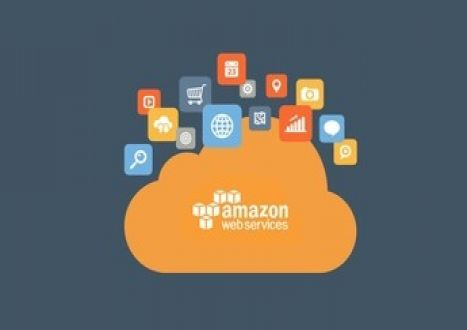
Top Amazon Certification Exams
- AWS Certified Solutions Architect - Associate SAA-C03
- AWS Certified Solutions Architect - Professional SAP-C02
- AWS Certified AI Practitioner AIF-C01
- AWS Certified Cloud Practitioner CLF-C02
- AWS Certified Machine Learning Engineer - Associate MLA-C01
- AWS Certified DevOps Engineer - Professional DOP-C02
- AWS Certified Data Engineer - Associate DEA-C01
- AWS Certified Security - Specialty SCS-C02
- AWS Certified Advanced Networking - Specialty ANS-C01
- AWS Certified Developer - Associate DVA-C02
- AWS Certified Machine Learning - Specialty
- AWS Certified CloudOps Engineer - Associate SOA-C03
- AWS Certified SysOps Administrator - Associate
- AWS-SysOps
Site Search:








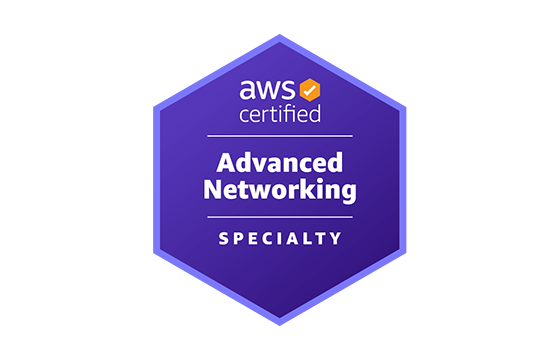



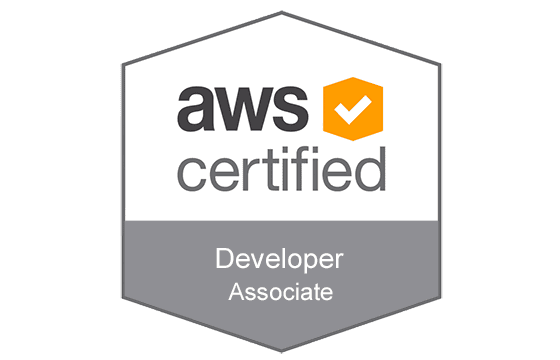
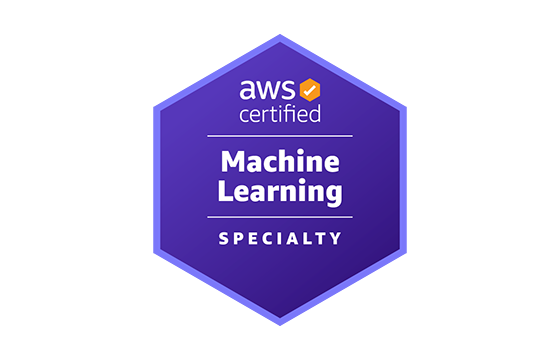

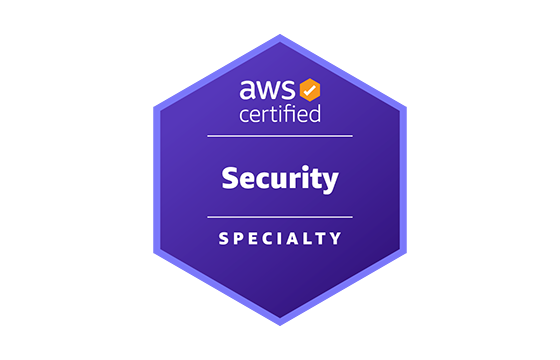
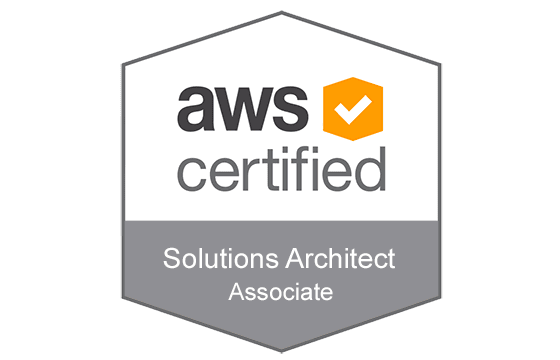
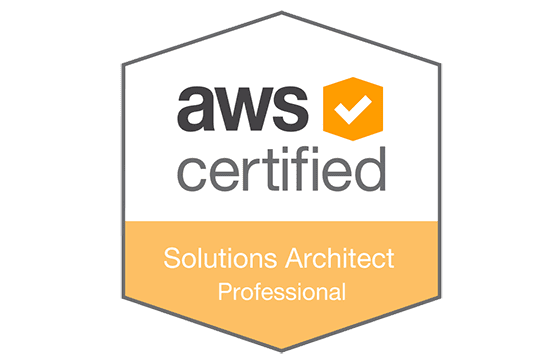
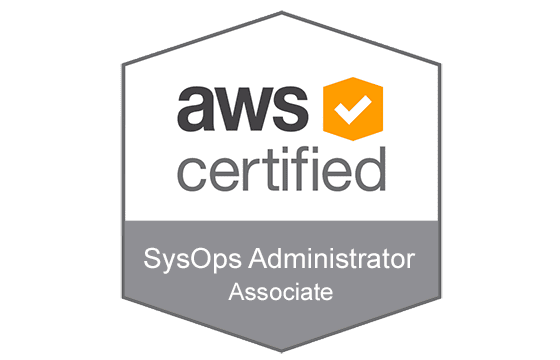
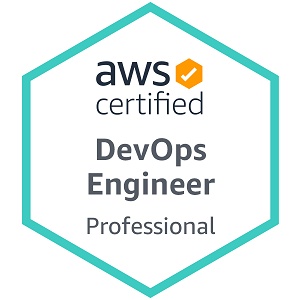



@Israel20, I had my doubts when I used these AWS Certified Developer Associate questions and answers to prepare but they eventually proved themselves. they are highly valid mateials as they helped me answer the actual exam questions with ease… cast your doubts aside and just start your prep as early as you can! and these files will also help you pass☺
can these practice questions and answers for AWS Certified Developer Associate exam help me pass my test? ive heard cases where such materials turn out to be outdated leaving candidates struggling with their exam!! do not want to be caught up in the same situation! someone please answer…
@paulin, you are fortunate to have friend that knows this site… I was in the same situation as you not long ago and these AWS Certified Developer Associate exam dumps saved me! I covered much when training with these files and also i used some other resources to find the info about several concepts… such a comprehensive prep made me able to pass this exam from Amazon … try them, they will not disappointyou! And good luck!
hi guys, I am running out of time and don’t feel prepared for this exam… a friend suggested that these AWS Certified Developer Associate braindumps can help me… are they really enough to prepare for this exam within a short time??
@Adriel, last week i passed my Amazon exam using these dumps for aws certified developer associate test. they are still valid! i dint meet any new questions in the actual assessment. these materials are a sure way to pass so don’t hesitate to download them
are these vce files for AWS Certified Developer Associate exam still valid? who has used them recently and passed to please confirm…
Hello guys, Is the premium dump valida???
Is this dump still valid ?
Is this premium version including just 62 Q&A's valid?
Thanks!